
Manufacturer's Specifications:
Frequency Response: 2 Hz to 20 kHz, ±0.3 dB. S/N: 115 dB.
Dynamic Range: 100 dB (EIAJ). THD: 0.0015% at 1 kHz, 0 dB.
Channel Separation: 115 dB at 1 kHz.
Wow and Flutter: ± 0.001% weighted peak (EIAJ).
Output Level: 2.0 V into 50 kilohms for unbalanced (fixed and variable) and balanced outputs.
Digital Output: Coaxial (SPDF), 0.5 V peak to peak; optical (EIAJ), -18 dBm, 660 nm.
Headphone Output Level: 28 mW into 32 ohms.
Number of Programmable Selections: 20.
Power Requirements: 120 V a.c., 50/60 Hz, 22 watts.
Dimensions: 18 11/16 in. W x 4 15/16 in. H x 14 3/4 in. D (47.5 cm x 12.5 cm x 37.5 cm).
Weight: 37.4 lbs. (17 kg).
Price: $2,000, including remote.
Company Address: Sony Dr., Park Ridge, N.J. 07656.
A few months ago, Sony introduced a no-holds-barred CD player that represented the very best digital technology they had been able to come up with. The R-1 CD player was delivered as a two-piece component and carried a suggested retail price of $8,000! Needless to say, a CD player at that price was not expected to be a runaway best seller. It was designed and produced more as a reference unit against which other CD players could be compared.
Now Sony has come up with a CD player at one-quarter that cost. Amazingly, the CDP-X7ESD not only incorporates much of the advanced technology found in the R-1 but is loaded with many of the convenience features Sony has invented over the past year or two. Custom File lets you maintain your personal program bank for up to 227 CDs, so you can listen to those selections you like best on a disc, in any order you prefer. Up to 20 tracks can be selected for each disc you "file" in this data bank. You can even select points within a track--regardless of whether or not the disc has index divisions--at which to begin playback.

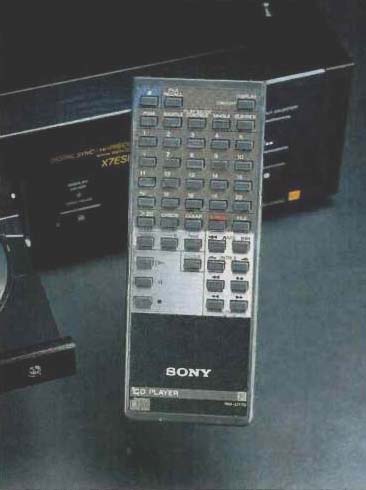
"Program Custom Editing" provides automatic editing of selections according to available tape length. Should you have to cut a selection at its midpoint when recording it onto tape, you can designate the time of the selection in advance, and the player will gently fade the recording level about 5 S before the end of the designated time and then pause automatically. "Shuffle Play," which first appeared on a Sony CD player a few years ago, is also available on this unit, as is direct track selection using the multi-function remote control supplied with the unit. There are, of course, the usual assortment of repeat modes as well.
For all the convenience features found on the CDPX7ESD, the performance of this outstanding unit impressed me even more. Among the technological design innovations that distinguish this player from others is Sony's Digital Sync System, which helps provide highly accurate, jitterless playback. Dual, 18-bit, linear D/A converters are used, along with an eight-times oversampling, 45-bit, noise-shaping digital filter.
The Digital Sync System synchronizes the signal-processing IC just ahead of the D/A converter with the master clock that controls the converter circuit. This reduces time-based error (jitter) in the decoding of the signal, for more faithful D/A conversion and accurate phase relationships.
Thanks to eight-times oversampling, the audio signal is well separated from noise modulation components, which are now all the way out at 352.8 kHz. As a result, a very gentle analog low-pass filter can be used after the D/A converter, for improved group-delay characteristics. The 45-bit digital filter and noise-shaping system used in the CDP-X7ESD assure extremely good signal resolution, particularly at low frequencies.
Control Layout
Despite its sophisticated design, the Sony CDP-X7ESD has a relatively simple front panel. The usual power on/off switch, headphone jack, and line/headphone level control are at the left end of the panel, near the CD tray. Below the tray is a display area that can be turned on and off by means of a nearby button above the tray's "Open/Close" button. When activated, the display shows a variety of data besides the usual track, index, and time. Included are displays for repeat mode, custom index data, Custom File data, and the familiar track "calendar." Major operating controls are grouped at the right end of the panel and include buttons for stop, pause, play, audible fast forward and reverse, and track advance and reverse. A button labeled "Output Selector" (analog or digital) is augmented by LEDs that show which output is active.
The rear panel of the CDP-X7ESD is equipped with fixed and variable unbalanced line output jacks as well as balanced XLR-type output connectors. Coaxial and optical digital output terminals are also included. The digital outputs can be used with separate, stand-alone D/A converters or with some of the newer preamplifiers and integrated amplifiers that have direct digital input facilities. Frankly, after measuring the performance of the CDP-X7ESD and listening to it, I can't imagine why anyone would want to use a separate D/A converter; the D/A conversion provided by this Sony Compact Disc player is as good as, if not better than, the conversion of any stand-alone converter I have measured to date.
Most of the convenience features described earlier are accessible only via the wireless remote control, which has 20 numbered keys for easier direct access of tracks or index points. If a given disc has more than 20 tracks, simply press the ">20" button, which then allows you to input dual digit numbers.
Measurements
Figure 1 shows the frequency response of the CDPX7ESD CD player from 10 Hz to 20 kHz. The left-channel output was flat to within better than 0.1 dB out to 20 kHz; the right channel was off by no more than -0.18 dB at that frequency. (The right-channel trace is slightly displaced for the sake of clarity: this displacement does not imply any measurable channel imbalance.) Interchannel phase difference is shown in Fig. 2. To make this plot more readable, I have adopted a new display format for this test, showing frequency on a linear, rather than logarithmic, scale and eliminating the duplicate frequency response curve which used to be superimposed on the phase curve. Although the frequency scale extends down to 5 Hz, only the portion from 2 kHz up is significant.
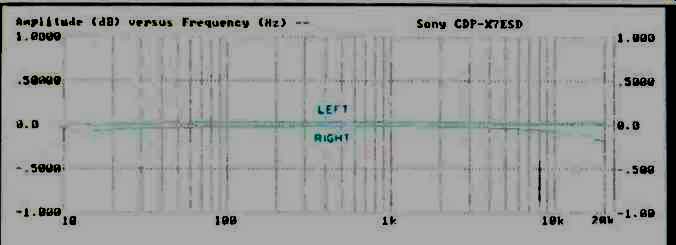
Fig. 1-Frequency response; right-channel curve has been slightly displaced
for clarity. In this and subsequent figures, left channel is solid curve
and right channel is dashed.

Fig. 2-Interchannel phase difference; see text.
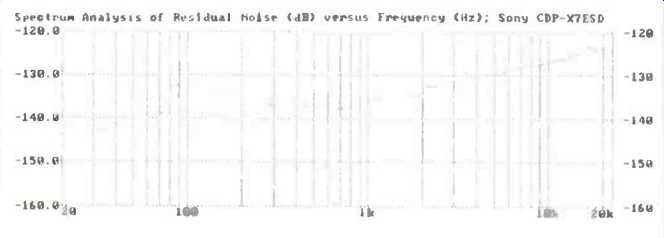
Fig. 3-Residual noise vs. frequency for "silent" track of CD-1
test disc.
For this Sony player, I expanded the vertical scale so that it extends only from-4° to +4° (instead of my usual ±900). This is because the maximum phase difference between the channels of the CDP-X7ESD was an unbelievably low 1.8°, even at 20 kHz! I used the "silent" track of my CD-1 test disc to measure the S/N ratio of this player's analog section. Frankly, I expected the player to fall short of the published S/N specification of 115 dB. How could any audio component deliver that low an S/N ratio, referred to 2.0 V output? If it met spec, that would mean a noise output of only 0.0000035 V, or 3.5 µV. Imagine my amazement when I measured an S/N ratio of 118.2 dB for the left channel and 117.6 dB for the right!

Fig. 4-THD + N vs. signal level for 1-kHz test frequency.
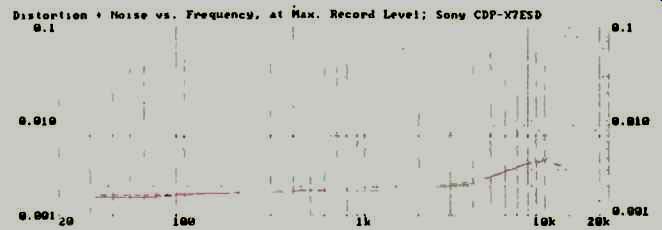
Fig. 5-THD + N vs. frequency for signal level of 0 dB.
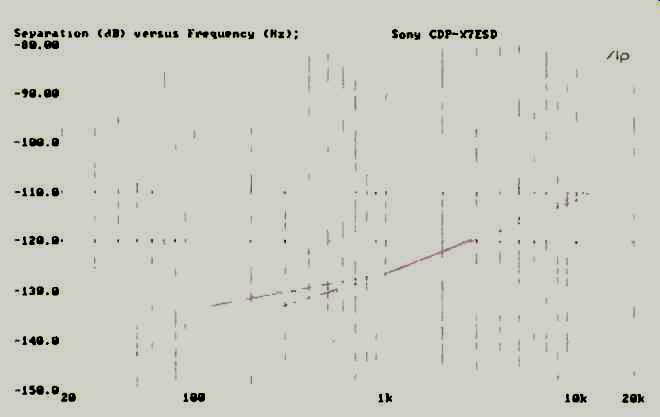
Fig. 6-Interchannel separation was virtually identical in either direction
(left to right or right to left).

Fig. 7--Deviation from perfect linearity for an undithered, 1-kHz signal;
see text.

Fig. 8--Linearity deviation for a low-level, dithered 1-kHz signal.
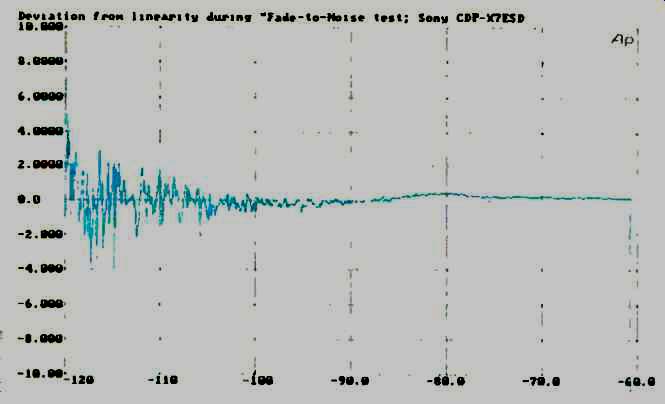
Fig. 9--Linearity deviation for fade-to-noise test of dynamic range, using
a dithered signal; see text.
An unweighted spectrum analyzer sweep of the residual noise at the analog outputs of the player (Fig. 3) confirmed my spot S/N readings. Even in the third-octave band, in the vicinity of 20 kHz, the noise reading was more than 120 dB below the output reference level.
Figure 4 is a plot of THD + N, expressed in dB, as a function of output level. This test was conducted using a 1 kHz signal and all readings are referred to maximum recorded level (0 dB). While there is a very slight tendency for THD to increase near maximum output levels (probably due to the characteristics of the final analog output stages), even at maximum output level, THD + N was in excess of 92 dB for the right channel and was 94 dB for the left. That 94-dB reading corresponds to a THD + N percentage of 0.002%, which almost precisely matches the 1-kHz readings for THD + N as a function of test frequency (Fig. 5): 0.0018% for the left channel and 0.0019% for the right. Even lower THD + N figures were obtained at lower test frequencies. At higher frequencies, though the curve does bulge upward at 10 kHz, my THD + N readings at that frequency and at 20 kHz were about the lowest I have ever measured for any CD player: 0.0036% and 0.0015%, respectively. I measured SMPTE-IM distortion at maximum output and obtained readings of 0.0036% for the left channel and 0.0035% for the right.
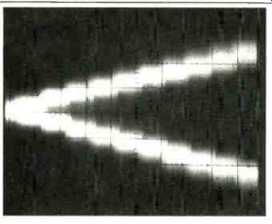
Fig 10--Monotonizity test; see tent.
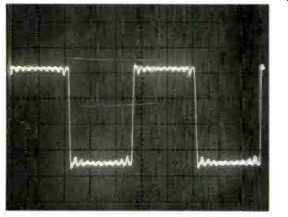
Fig. 11--Reproduction of a 1-kHz square wave.
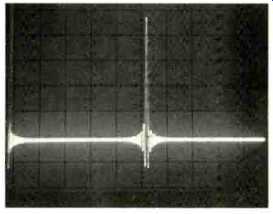
Fig. 12--Single-pulse test.
Stereo separation (Fig. 6) also exceeded published specifications by a wide margin. At 1 kHz, channel separation measured 126.5 dB in either direction (left to right or right to left). At 16 kHz, where most other players exhibit a fair amount of crosstalk, this player's separation still measured between 107 and 108 dB! Of course, no one really requires 120 dB or more in the real world of typical listening rooms. Even 30 or 40 dB would provide most listeners with a more than adequate stereo soundstage.
The next measurements I made, however, were of extreme significance and served to differentiate this player from much of the competition. As shown in Fig. 7, using undithered test signals from maximum recorded level to -90 dB, linearity was by far the best I have ever measured.
At -90 dB, where even the best D/A converter systems are off by at least a couple of decibels, this remarkable unit's deviation from perfect linearity was a negligible 0.2 dB. Using dithered signals for an evaluation of ultra low-level linearity, maximum deviation from perfect linearity was no more than 0.3 to 0.4 dB at -100 dB (Fig. 8). As I might have expected by now, the fade-to-noise test produced equally impressive results. Notice, in Fig. 9, how even at levels below -100 dB, as the noise begins to dominate the graph, the trace is still perfectly centered on the 0-dB axis. From this test, I was also able to determine that this unit's dynamic range (measured in accordance with the EIA Standard which is soon to be approved) reached the theoretical maximum of just under 115 dB! Sony's published specification for dynamic range, measured in accordance with a different standard suggested by the EIAJ specifications, is 100 dB. Using that method, I could only come up with a reading of 98.3 and 98.2 dB for the left and right channels, respectively.
To complete my study of the Sony's linearity, I used the special monotonicity test track of my CD-1 test disc. This track has recorded square waves repeated at levels from the least significant bit (LSB) to a level 10 bits higher. In a perfect player, each step will be equal in amplitude, in both polarities, and each step will increase positively (or negatively), with no regressive or partially regressive steps in the "staircase." The steps shown in the 'scope photo of Fig. 10 come as close to that definition of perfect monotonicity as any I have ever seen.
I pretty well knew in advance what to expect from 'scope photos of a 1-kHz square-wave test signal (Fig. 11) and a unit-pulse signal (Fig. 12) reproduced from test discs. How ever, just for the record, I went through these tests anyway.
Both 'scope photos depict reproduction of these signals that is virtually as perfect as the CD format can deliver.
Before disconnecting the player from my lab bench, I played my newest CD "defects" disc-the one that taxes the ability of a player to track out-of-spec digital pit tracks and disc sections where missing data occur in increasing lengths. There was a time when it was rare for a CD player to handle data gaps exceeding 0.7 mm in length. This Sony player only began to mistrack--and slightly, at that--when data gaps reached 1.5 mm in length!
Use and Listening Tests
As with other Sony CD players I've tested recently, the CDP-X7ESD's access time to any track or index point is so fast it was difficult to time it accurately with a stopwatch. The sound quality this player delivers is absolutely beyond criticism, whether the program material is a solo vocalist, a jazz or chamber music ensemble, or a full symphony orchestra.
For auditioning the CDP-X7ESD, I used a wide assortment of these types of program material. Among the newer Compact Discs I played were recordings of three Beethoven piano sonatas (Telarc CD-80185), jazz selections by Turk Murphy and his band (Bainbridge BCD501), and Mahler's monumental "Das Lied von der Erde" (Denon C072592). When I listen to an important Mahler work on a CD player such as this, I can't help but think that this musical giant would have been pleased to know how magnificent his works would sound, more than half a century later, on such superb equipment.
-Leonard Feldman
(Source: Audio magazine, Nov. 1989)
Also see:
Sony CDP-XA7ES CD Player (Mar. 1996)
Sony CDP-X77ES CD Player (Jun. 1990)
Sony CDP-620ES CD Player (Sept. 1985)
Sony CDP-610ES CD Player (Nov. 1984)
Sony CDP-650ESD Compact Disc Player (July 1985)
= = = =